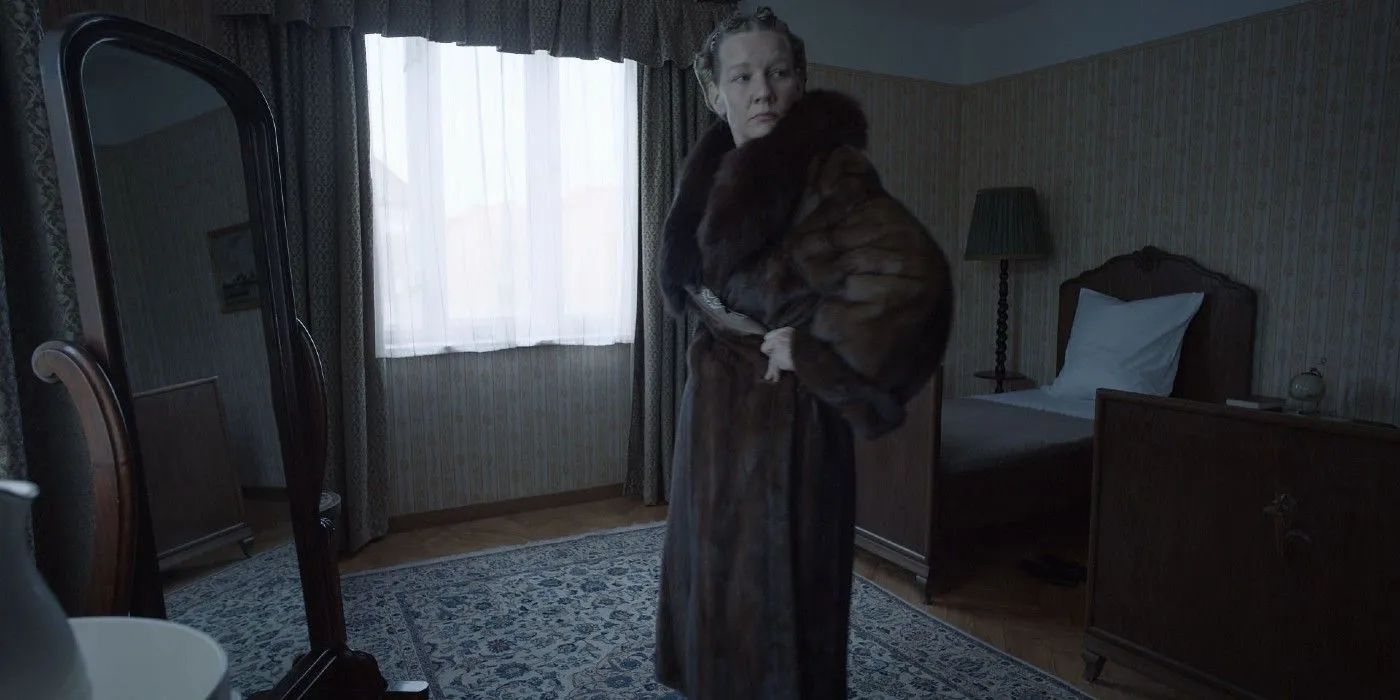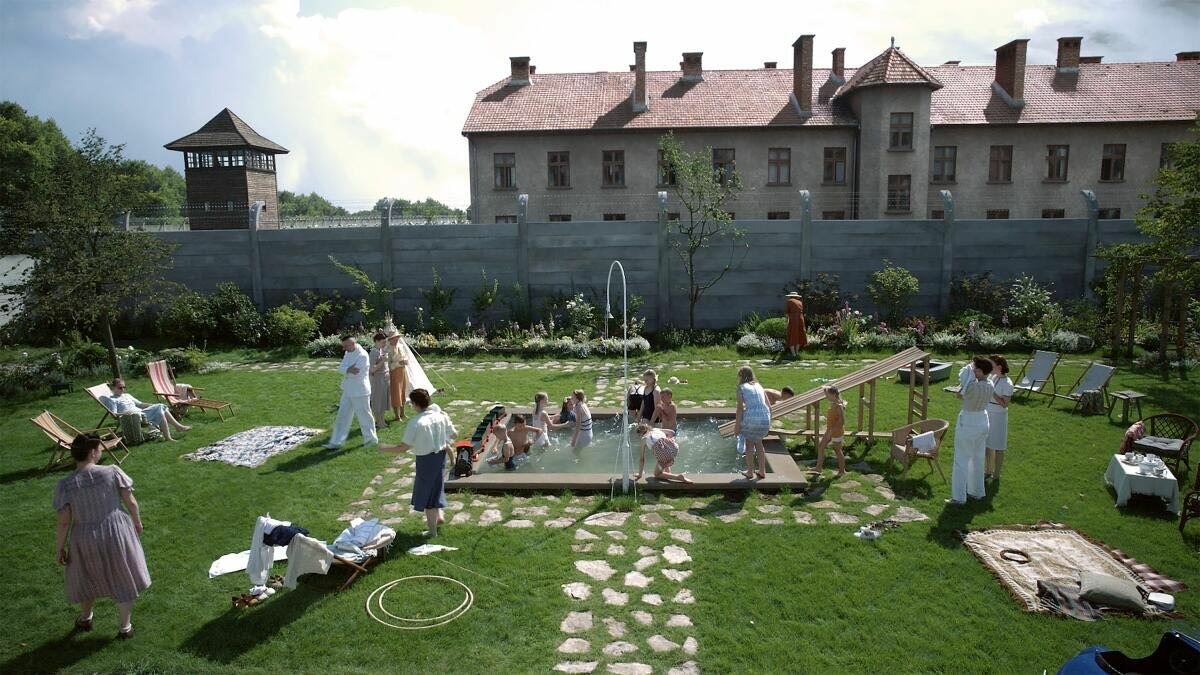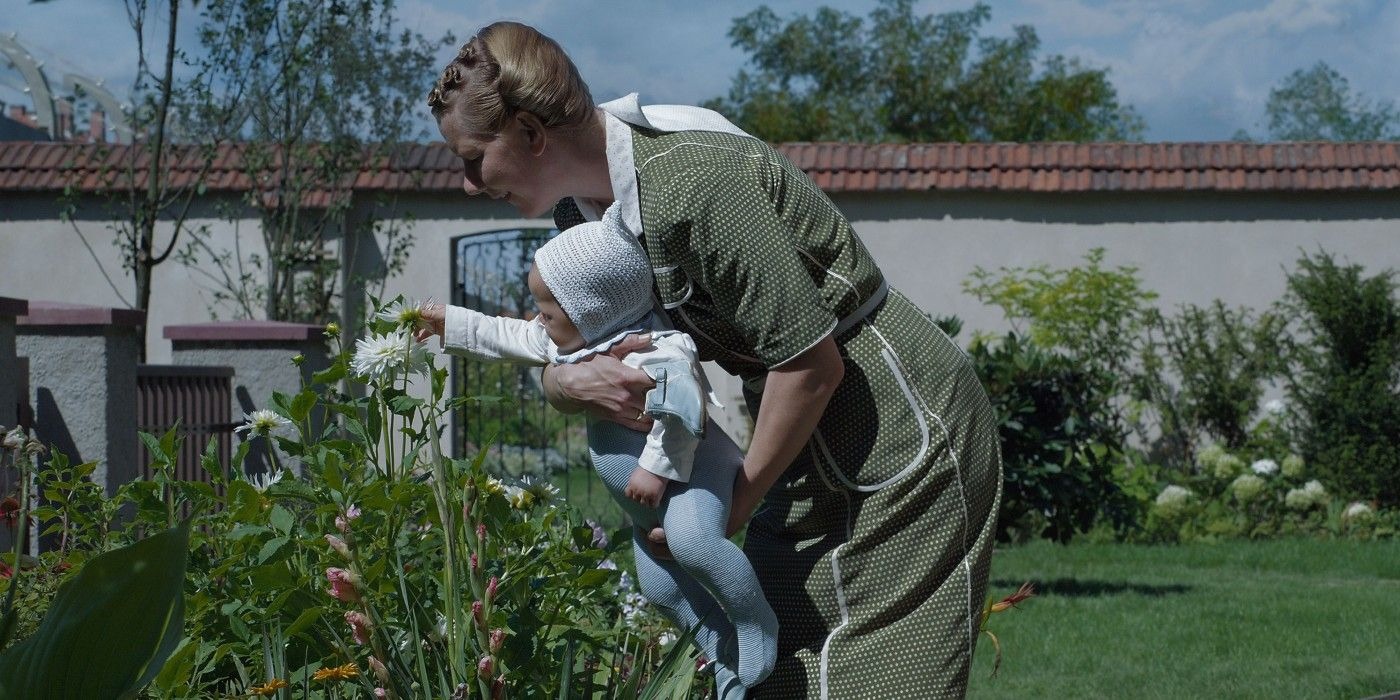Few films this year have been as widely discussed as The Zone of Interest, yet it stands as one of the most emotionally challenging to watch. Despite its runtime of just one hour and 45 minutes, Jonathan Glazer’s film delivers a deeply unsettling experience.
Given the intense nature of the story, it’s understandable if viewers find themselves questioning the meaning behind the ending. If you’re among those seeking clarity, this breakdown aims to provide answers. Based on Martin Amis’ book of the same title, the film adapts the true story of the Höss family.

Rudolf Höss, played by Christian Friedel, was the Nazi officer overseeing the Auschwitz concentration camp. The story revolves around how he and his family lived in a house positioned just beyond the camp’s perimeter.
A Chilling Look at Ordinary Life Next to Atrocity
Much of the film presents the daily routines of the Höss household. Rudolf’s wife, Hedwig (Sandra Hüller), revels in the luxuries their life provides, showing off new possessions such as a fur coat, a canoe, and a meticulously maintained garden.
Yet, lurking just beyond their domestic comforts is the ever-present reality of Auschwitz. Midway through the film, changes begin to disrupt the family’s structured existence. The most pressing concern arises when Rudolf is assigned a new post, requiring him to relocate.
Hedwig, however, resists leaving the home she has carefully built, where they are raising their children. A compromise is reached—Hedwig will remain at their house while Rudolf departs for his new role, with the expectation that he will eventually reunite with them.
A Deeper Look at the Flash Forward in The Zone of Interest
Once Rudolf takes up his new post, the focus changes to his efforts at proving himself, all in the hopes of persuading his superiors to allow him to return home. His dedication pays off, and he is eventually granted his request.
Just as he prepares to leave, he pauses, feeling suddenly unwell, and vomits on the floor. Does this unexpected illness signify something deeper, now that he is so close to reuniting with his family? At this point, the film abruptly introduces a flash-forward sequence.
The audience is transported to the present-day Auschwitz site, now preserved as a historical museum. Employees are seen cleaning the remnants of the gas chambers—structures Rudolf had previously examined in detailed plans earlier in the film.
Other parts of the museum, including exhibits displaying the suitcases and shoes of Jewish victims, are also shown. This sequence lasts only a few minutes before the film returns to Rudolf, who regains his composure and continues his descent down a dimly lit staircase.
The inclusion of this flash-forward serves a deliberate purpose. Throughout the film, the Höss family exhibits no remorse for the horrors occurring just beyond their home. On the contrary, they benefit from the situation.
While the audience remains painfully aware of the suffering at Auschwitz, the final act takes place away from the camp. Here, the brutal sights and sounds are absent, and instead, we see Rudolf alone, separated from his family. His request to return is granted, implying that all is falling back into place for him.
However, Glazer ensures that no sense of relief or joy seeps into this moment. The message conveyed through this flash-forward is striking. Glazer seeks to remind viewers that the man they have been observing throughout the film played a direct role in the systematic extermination of Jewish people.
This scene underscores a critical point—horrific events should never be normalized or ignored, a reality that was, unfortunately, common during Hitler’s rule.
The Fate of the Höss Family
Following the flash-forward, Rudolf collects himself and continues down the stairs, presumably returning to Hedwig and their children. Unlike some historical films, The Zone of Interest does not provide title cards explaining the real-life outcomes of its characters.

However, historical records offer insight into what happened to Rudolf Höss after the war. As one of the key figures responsible for implementing the gas chambers at Auschwitz, Höss contributed to making the camp the epicenter of mass murder during World War II.
According to the United States Holocaust Memorial Museum, over 1.1 million people perished at Auschwitz, with nearly one million of them being Jewish. In 1944, an SS report described Höss as “a true pioneer” for his efficiency in executing mass killings.
With the war nearing its end and the Soviet Army advancing in 1945, Höss fled and went into hiding in Germany under an assumed identity. Despite his efforts to evade capture, he was eventually found, arrested, and put on trial. In 1947, he was sentenced to death.
A 2013 interview published in The Washington Post offers additional details about what happened in the Höss family. His daughter Brigitte recounted how they struggled to reintegrate into post-war Germany, facing widespread rejection from society.



